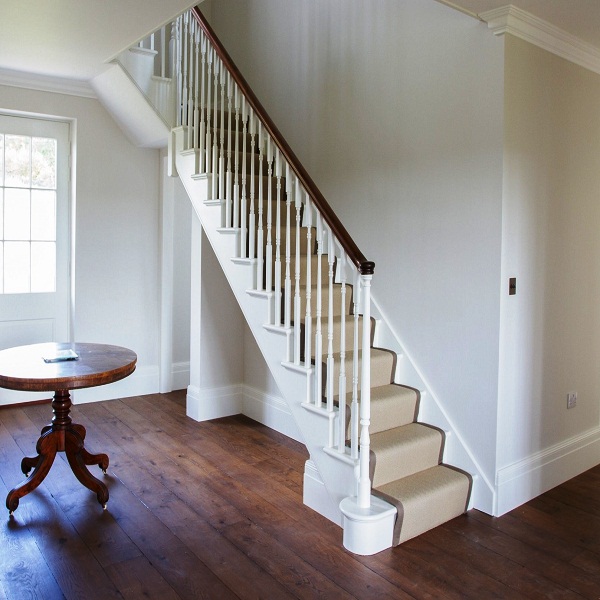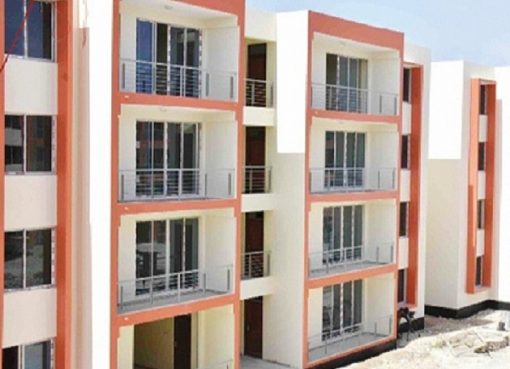A lot of people relegate a lot of jobs to the background simply because they are not done with suited attire. These kind of people forget that gold is not extracted from the offices and that oil that sustains a retinue of economies are not found on the football field. People also forget that except you soil your hands, you cannot eke a living. The fact that people work in the banks, work in ministries and other white-collar related jobs does not mean they will make money more than artisans.
Of course, in developed economies, it is the artisans that make more money. You make money and still support the economy and discourage building collapse. It is laziness that make oil-rich nations to employ foreign artisans and engineers to explore and drill their oil. Of course, Nigeria has all it takes to be an economic world power. But the saying that once the front runner misses the way, all that follows misses it, is very peculiar to the Nigerian nation. Our leaders make money through our collective sweat just because they are leaders and so people now see making easy money as the right way of creating wealth. The philosophy of whatever you are doing, you should do well is very important here. If those who mound blocks, make them with the mind that it must last, then it will save the cost when the building collapses. This attitude of everybody eyeing white collar jobs or looking for cheap money should be reversed if the country and the country men should become self reliant. The fact that people want to own a home does not mean that anything can come together to give the home, rather there should be selected things that should give the togetherness that makes the solid home. The inability to get the solid materials and the required aggregates to sum up to the quantity needed for the house building is seen as a major cause of building collapse in Nigeria.
It is an undisputed fact that shelter is one of the basic human necessities of man. However, irrespective of the importance of shelter, most people do not have access to good shelter, most especially in developing countries. In fact there is an estimated deficit of between 18 million to 32 million housing units in Nigeria in 2012. This is despite the fact that some experts in some quarters are brandishing figures recklessly to suggest the limit of the housing deficits in the country. The poor are most adversely affected by this housing shortage. The most important building materials for low-cost housing are blocks/ bricks, but conventional quality concrete blocks are too expensive for low-income communities. So if one considers molding solid bricks and masters the artistry, there every sureness that his products will always be in hot chase. When you use the product today, you will become a reference point. But on the contrary, if the product is not the quality type, after using it for the first times, you may not go back for it. Due to high cost of Portland cement, a lot of block producers use less than the recommended amount in the concrete mix making the blocks to be substandard. This is one of the most important contributing factors for the frequent building collapse in the country recently. Bricks/Blocks are solid pieces of hard substances, usually with flat sides, used as construction units. They are sometimes referred to as masonry units (MU). Block and brick masonry are strong, fire-resistant, insect-proof building materials. They have a lot of thermal mass, which helps them retain heat and makes up for their relatively low insulation value. However, despite their similarities, block and brick have some major differences. Blocks are bigger in size as compared to bricks; blocks are usually made of concrete and hollow, while bricks, on the other hand, are smaller usually made of clay or other earthen materials and solid. Compressed Earth Brick (CEB) is an alternative building material to concrete blocks which have been proved to be an excellent substitute. However, the full potential of CEB is yet to be utilized due to the fact that most of the commercially available machines that produce CEB are very expensive. The most common CEB machine (Hydrafoam) is sold at about N6 million. There are simpler and cheaper low income brick/block producing machines.
 Commonly used in the construction industry, concrete hollow blocks are usually manufactured using lightweight aggregates with a certain design load depending on the nature of member it will be used into. Normally, concrete hollow blocks have voids of 1⁄4 its gross area and the solid area should be not less than half of its area to attain its maximum allowable load capacity. The voids are generally filled with mortar of lightweight aggregate material as well. There are two kinds of concrete hollow blocks; load-bearing concrete hollow blocks and non-load bearing concrete hollow blocks. It is available in sizes such as 100x200x400mm, 200x200x- 400mm, 150x200x400mm and so on. Most of the time compared with bricks but is different in a lot of ways. Aerated Autoclaved concrete blocks are lighter and bigger version of bricks. Mostly made with same ingredients as of bricks but with a different composition which made the material a vessel for cost-cutting. Studies show that using autoclaved aerated block has diligently reduced the overall steel and concrete consumption by 15 percent and 10 percent. Concrete bricks typically are small rectangular block arranged and piled
Commonly used in the construction industry, concrete hollow blocks are usually manufactured using lightweight aggregates with a certain design load depending on the nature of member it will be used into. Normally, concrete hollow blocks have voids of 1⁄4 its gross area and the solid area should be not less than half of its area to attain its maximum allowable load capacity. The voids are generally filled with mortar of lightweight aggregate material as well. There are two kinds of concrete hollow blocks; load-bearing concrete hollow blocks and non-load bearing concrete hollow blocks. It is available in sizes such as 100x200x400mm, 200x200x- 400mm, 150x200x400mm and so on. Most of the time compared with bricks but is different in a lot of ways. Aerated Autoclaved concrete blocks are lighter and bigger version of bricks. Mostly made with same ingredients as of bricks but with a different composition which made the material a vessel for cost-cutting. Studies show that using autoclaved aerated block has diligently reduced the overall steel and concrete consumption by 15 percent and 10 percent. Concrete bricks typically are small rectangular block arranged and piled
Source: The Sun











14 thoughts on “Practitioners Turn To Brick Blocks For Building Collapse Rescue”